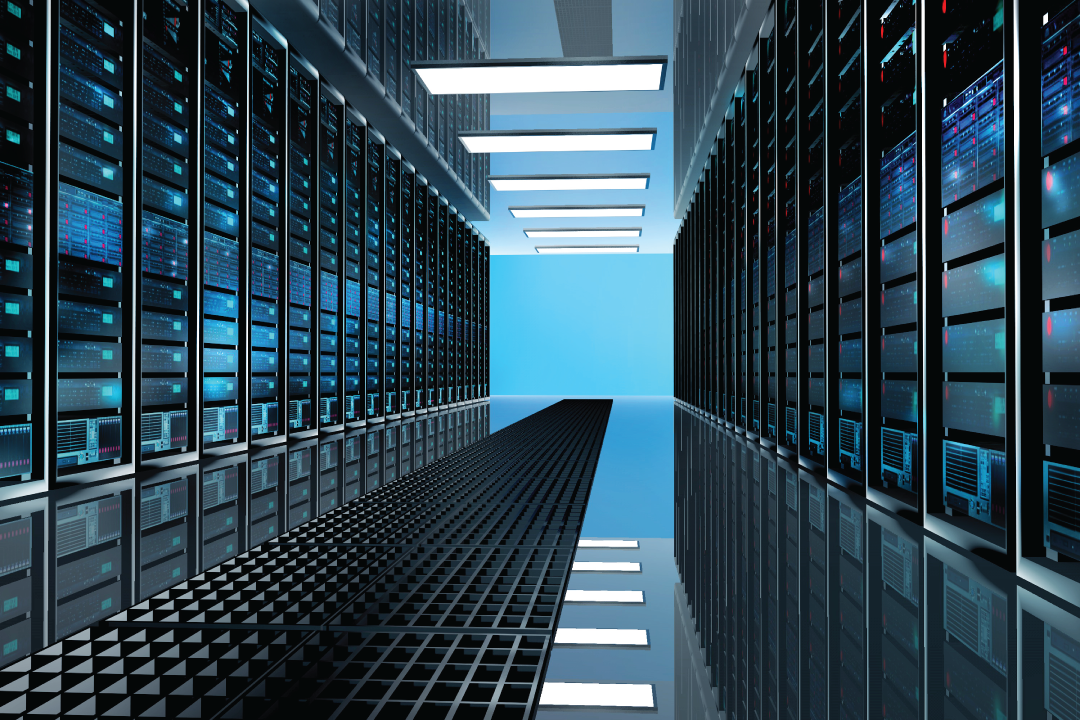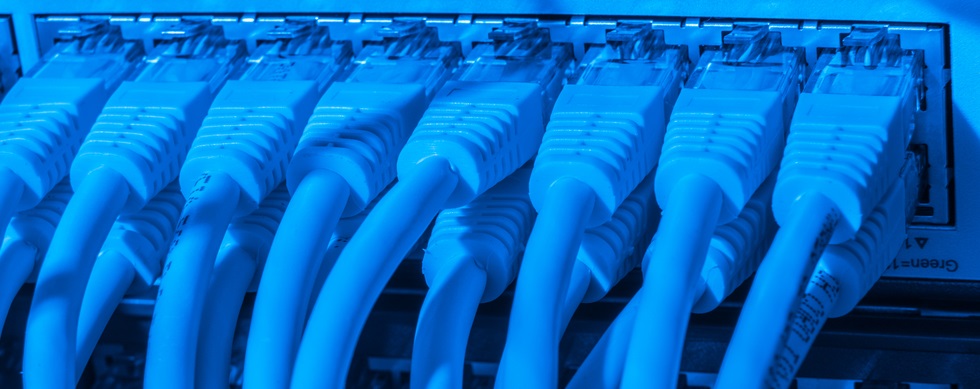Networking & Infrastructure
Solutions for Your Complex Data-Exchanging Needs
Free Network Infrastructure Assessment
We’ll come to you and conduct a thorough review of your existing infrastructure; network, backups, and hardware, and more. After analyzing your issues and workflow, we’ll show you a simple and COST EFFECTIVE plan for upgrading your network.
A thoughtfully designed network infrastructure is the backbone of your business. It empowers your employees to exchange data and enables them to work in unison.
What makes up a network? Any combination of servers, desktop computers, wireless devices, routers, printers, firewalls, switches and backup equipment, all connected and working harmoniously to keep your business running smoothly. We have designed simple networks for 2 users as well as complex networks for multi-site, 100+ user systems. Not to worry, we will handle all the simple and complex components no matter the size and/or needs of your business.
![]() IMPLEMENT a powerful system designed to improve employee productivity by allowing access and sharing files.
IMPLEMENT a powerful system designed to improve employee productivity by allowing access and sharing files.
![]() MAXIMIZE network-wide performance; allow multiple locations to seamlessly act as one large network thereby expanding your access to qualified and exceptional employees from anywhere.
MAXIMIZE network-wide performance; allow multiple locations to seamlessly act as one large network thereby expanding your access to qualified and exceptional employees from anywhere.
![]() PROTECT the vulnerability of your sensitive information by using the latest security technology for networked computers, allowing you to keep pace with ever changing compliance concerns.
PROTECT the vulnerability of your sensitive information by using the latest security technology for networked computers, allowing you to keep pace with ever changing compliance concerns.
Are you Frustrated by Slow PCs, Screen Freezes, Error Messages and Much More?
These May All Be Signs Your Computer Network Infrastructure is in Need of an Upgrade!
UPDATING YOUR NETWORK
A good network infrastructure design process begins with an assessment and analysis of key areas contributing to your current network’s storage capacity, performance and accessibility, applications used, and overall security. Over time, all computer and servers slow down and become progressively worse. Some potential threats are spyware, viruses and other malware unknowingly installed on your machine, old equipment and poor maintenance.


Single-Site (LAN)
If you desire instant communication between multiple computer components for your business in one geographical location, then a Single-Site Network is for you. A local area network (LAN) at the location establishes the connections between the devices you choose with network cabling/wireless infrastructure as the foundation of the design. If there is an existing infrastructure, our analysis will enable maximizing your existing investments.
![]() File and printer/scanner sharing is a common and highly desirable component.
File and printer/scanner sharing is a common and highly desirable component.
![]() Secure design enabling users to only access the resources that are suitable to their job roles.
Secure design enabling users to only access the resources that are suitable to their job roles.
![]() Network firewall is strongly recommended to enable appropriate remote access.
Network firewall is strongly recommended to enable appropriate remote access.
![]() Permission based web access for your employees tailored to your business requirements.
Permission based web access for your employees tailored to your business requirements.
![]() Remote enabled for teleworkers, traveling staff, and customer or vendor extranets as needed.
Remote enabled for teleworkers, traveling staff, and customer or vendor extranets as needed.
Multi-Site (WAN)
If you have multiple physical locations and require shared information access, a Multi-Site Network is essential for your business. The locations can be one block apart or half way across the globe. In essence, a local area network (LAN) is installed at each location then a Wide Area Network (WAN) is constructed linking all locations using public internet and highly secured with Virtual Private Network (VPN) technologies. In the event of existing infrastructure, our analysis will maximize your current investments; each location can have its own distinct needs and configuration.
![]() Network cabling, wireless infrastructure and secure guest access are the foundations of design at each site.
Network cabling, wireless infrastructure and secure guest access are the foundations of design at each site.
![]() File and printer sharing is a common component, including printing to/from remote locations.
File and printer sharing is a common component, including printing to/from remote locations.
![]() Firewalls are constructed to enable appropriate access to other WAN locations.
Firewalls are constructed to enable appropriate access to other WAN locations.
![]() Remote access and permission based web access for your users as designed collaboratively.
Remote access and permission based web access for your users as designed collaboratively.


Cloud Based Networks
A potentially far superior way to get the up-to-date computer network you need without the heavy costs, complexity, and problems of a physical network upgrade is a cloud based solution. Depending on your business needs you may find this option, along with employing the services of cloud based/hosted applications, the easiest and most cost effective. A Public Cloud solution requires little upfront investments and is scaleable according to the size of your data. A Private Cloud can be just as cost effective but with added bonus of control and flexibility of your own environment.
![]() Convenience of accessing your applications from anywhere at any time.
Convenience of accessing your applications from anywhere at any time.
![]() Free from purchase of bulky physical servers and costly instillation/maintenance/upgrades.
Free from purchase of bulky physical servers and costly instillation/maintenance/upgrades.
![]() Advanced security and reliability and accelerated performance levels.
Advanced security and reliability and accelerated performance levels.
![]() Proven to eliminate or drastically reduce system crashes, slowness, and viruses.
Proven to eliminate or drastically reduce system crashes, slowness, and viruses.
Six Things You Must Do At A Minimum to Protect Your Business Network!
While it is impossible to plan for every potential computer problem or emergency, a little proactive monitoring of your network will help you avoid or greatly reduce the impact of the vast majority of computer disasters you could experience. There are over [37] critical checks and maintenance tasks that need to be performed on a daily, weekly, and monthly basis. We are going to share with you the [6] that are most important for protecting your company.
– Jim-Barry Behar, CEO, Relentless Solutions
1. Make Sure you are Backing Up Your Files Every Day
It just amazes me how many businesses never back up their computer network. Imagine this: you write the most important piece of information you could ever write on a chalkboard and I come along and erase it. How are you going to get it back? You’re not. Unless you remember it, or if you made a copy of it, you cannot recover the data. It is gone. That is why it is so important to back up your network. There are a number of things that could cause you to lose data files. If the information on the disk is important to you, make sure you have more than one copy of it.
2. Check Your Backups on a Regular basis to Make Sure They are Working Properly
This is another big mistake I see all too often. Many business owners set up some type of backup system, but then never check to make sure it is working properly. Its not uncommon for a system to APPEAR to be backing up when in reality, it is not. There are dozens of things that can go wrong and cause your backup to become corrupt and useless. That is why it is essential to check the status of backups on a regular, even DAILY, basis.
3. Keep an Offsite Copy of Your Backups
In the event of fire, flood, or any unforeseeable disaster that could destroy your server, what would happen to your on-site backup tapes or drive? Most likely, the backups would suffer the same fate as your defunct server. Many businesses are reducing to filing for bankruptcy for this very unfortunate but very possible situation. Having an offsite backup is simply a smart way to make sure you can get your business back up and running in a relatively short period of time.
4. Make Sure Your Virus Protection is Always On AND Up-To-Date
Just think back to 2013 and how often major corporations were in the news for damaging security leaks. This could happen to any one, any size, any place. Virus attacks can come from spam, downloaded data, music files, instant messages, websites, or emails from friends and client. Not only can a virus corrupt your file and bring down your network, but it could also hurt your reputation. If one of your employees unknowingly spreads a virus to a customer, or if the virus hijacks your email address book, you could make a lot of people very angry. You cannot afford to be without up-to-date virus protection.
5. Set Up a Firewall
Small business owners tend to think that because they are “just a small business”, and no one would waste time trying to hack in to their network when nothing could be further from the truth. The simple fact is that there are thousands of unscrupulous individuals out there who think it is fun to disable your computer just because they can.
6. Update Your System with Critical Security Patches as They Become Available
If you do not have the most up-to-date security patches and virus definitions installed on your network, hackers can access your computer through a simple banner ad or through an email attachment. And most hackers do not discover these security loopholes on their own! Instead, they learn about them when a software announces the vulnerability than issues an update- that is their cue to spring into action. Any computer or network that has yet to install the security patch is at risk.
